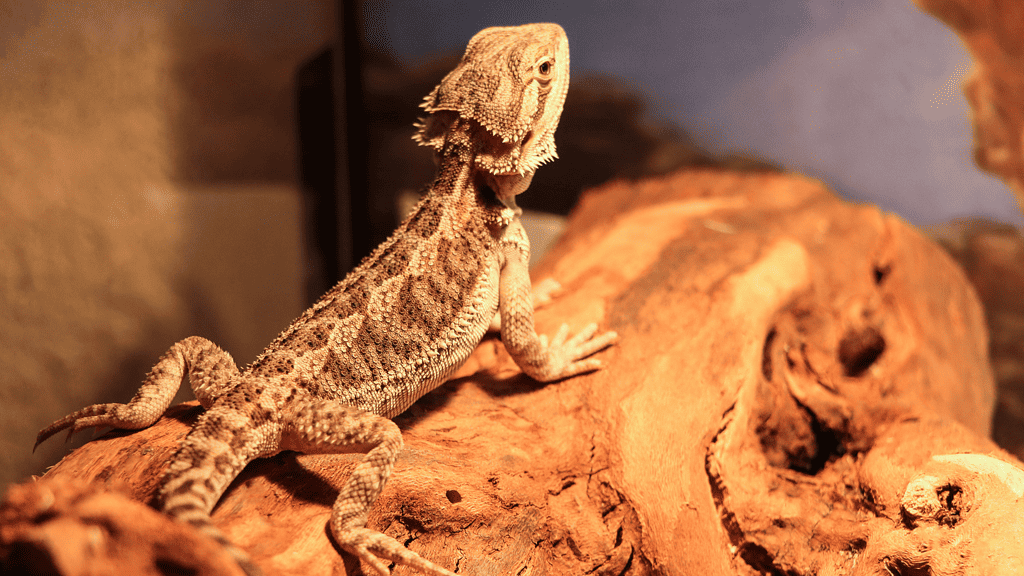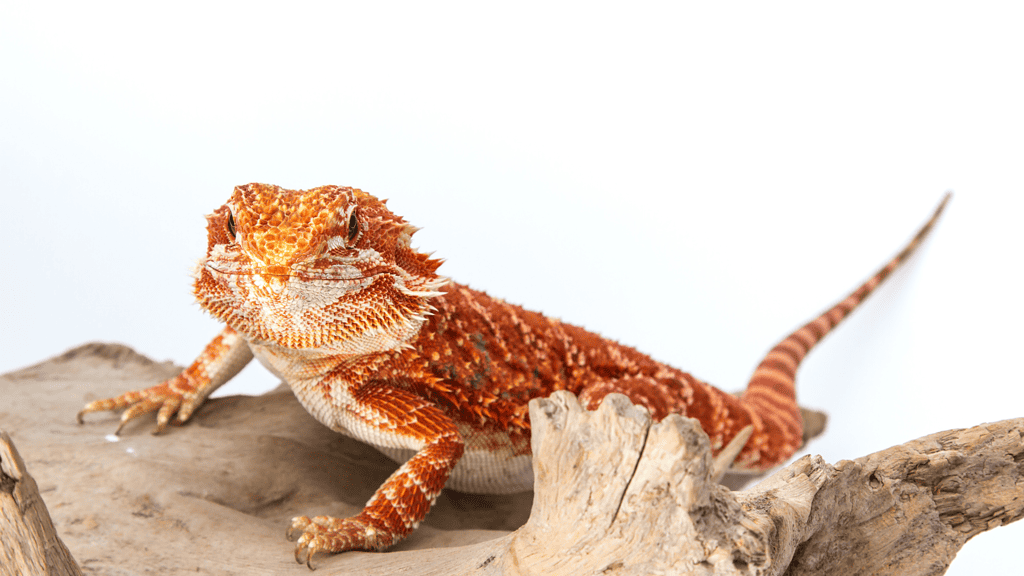Everyone thinking about getting a bearded dragon as a pet wants to know if they are active and, if so, how active they are. There are particular creatures that are more active than others, and some animals, like the sloth, are never active no matter what time it is. When exactly are bearded dragons most active?

Bearded dragons are incredibly active during daytime hours. They spend all their time wandering around, drilling, and climbing if they can do so in their enclosure. They also spend a lot of time basking, which is inactive.
When getting a new pet, one of the first questions to ask is how active it is. This tells you how active they should be and if you have time for them.
Are Bearded Dragons Active Pets?
Bearded dragons do maintain a high level of activity during the day. The good thing about them is that they do not make noise. In their terrarium, they move a lot and explore, but they’re not as irritating as a hamster at night.
The only time they can truly rest and lie motionless is when they are basking in their favourite area to bring their body temperature up to the optimal level. But after that, they move around a lot and are very careful and interested.
When Are Bearded Dragons Most Active?
Most bearded dragons are at their most active right after they warm up. Every bearded dragon has its unique characteristics. Although some bearded dragons are more active in the afternoon, at least one becomes active immediately after bathing.
What Kind of Activity Level Do Bearded Dragons Have?
Bearded dragons are like canines and would play all day if given a chance. However, they must sometimes bask to survive. Because they are cold-blooded, bearded dragons must rely on their surroundings to maintain a consistent body temperature. Because of this, you will see that they will spend hours upon hours basking in the sun to raise their body temperatures and maintain their health.
However, this does not mean they are not engaged in any activity. Bearded dragons are inquisitive reptiles that prefer to roam around and dig around during the day. As a result of this trait, bearded dragons are quite fun and energetic creatures.
In addition, they will also spend time climbing branches, provided that there are branches for them to climb. Unlike other reptiles, bearded dragons prefer to roam and play outside their habitats.
They like playing with their owners just as much as any other time. If you compare them to other reptiles like chameleons, you’ll see that their behaviour is somewhat unique, yet, it’s simply how they are.
Why Should Bearded Dragons Be Active?
Bearded dragons that move around more are usually healthier and happier. Here are the most important reasons to keep your bearded dragon active.
Basic Instincts
Bearded dragons, just like humans, require regular physical activity to maintain a healthy and strong body. They are used to the harsh conditions they must endure surviving in the wild, which needs them to remain active.
Bearded dragons living in the wild are constantly searching for food or trying to escape being eaten by other animals. They won’t be able to move around as freely as they did when they were in the wild, and because of this, they won’t be able to relax as easily while simply sitting around doing nothing.
Because of this, it is essential to provide your bearded dragon with a spacious habitat to do almost everything it pleases without being hampered in any way. Different bearded dragons at various life stages will require a habitat that is appropriately sized for them.
Even if you find them a big tank to move around in, they still need to be able to move around outside the tank. It is sufficient for them to spend between 20 and 30 minutes daily engaging in activities outside to maintain excellent health.
Mental Process
A bearded dragon’s brain is also kept active when it stays busy. You must feel bored if you don’t engage in any activities throughout the day, right? The same thing is true for a bearded dragon if it is allowed to spend the entire day within its tank.
Keep in mind that they always seek food and hide from other animals to stay alive in the wild. This instinct keeps them busy and gives them something to consider about for the rest of their lives.
Since bearded dragons won’t need to hunt or hide at home, they won’t have much to do. Because of this, we need to do all our power to ensure that they are cognitively and physically stimulated during the day.
Why Is My Bearded Dragon Not Active?
If you own a bearded dragon or have a friend who does, they may say they’re lazy. Or you may have noticed that bearded dragons tend to be somewhat lazy. The inactivity of bearded dragons may typically be attributed to different causes.
Wrong Lighting
Bearded dragons require a basking area maintained at a particular (high) temperature. Because they are cold-blooded, they require an external heat source to get their body temperature up to the level necessary for movement, hunting, and digestion.
Your bearded dragon will not move around as much if the lighting setting is incorrect and the temperature is too low. First, it ought to be at since it cannot bring its internal temperature up to the level. Second, the temperature in your terrarium is too low for your bearded dragon; thus, it would want to remain somewhere warmer.
In addition to that, you will have to give your bearded dragon with a UVB light. Your bearded dragon will most likely become unwell if you do not give it access to a UVB lamp that produces enough UVB light. Even if you may have access to a UVB light, this does not always guarantee that it is beneficial for your bearded dragon.

Bad Diet
Inactive bearded dragons can also be caused by improper feeding or overfeeding. Bearded dragons who have reached adulthood should focus more on eating plants than live prey. Most people don’t believe that, and they feed adequate nutrition every day or almost every day.
In addition to that, it is not good for the health of your pet bearded dragon to provide it with food daily and to provide it with an excessive amount of insects. On the other hand, a healthy bearded dragon can live without food for more than a week. That doesn’t mean you should only give it food once a week, but you shouldn’t provide it with food daily.
Small Tank Size
Bearded dragons may reach lengths of up to 2 feet, requiring much room to move around. If the tank is too tiny, they won’t be able to move about freely and will get uninterested in their environment very quickly.
It’s not surprising that they’ll get sad because they don’t have anything to keep their minds busy. You must ensure that your bearded dragon is maintained in the appropriate tank so that it may be as inquisitive as it desires.
Do Bearded Dragons Active in the Wild?
Yes, bearded dragons in the wild are very active. Bearded dragons are always on the hunt for food, and during the day, the males spend their time investigating new areas of their territory and fending off other male bearded dragons. Bearded dragons with female beards are wandering around and hunting for potential mates.
People don’t feed bearded dragons in the wild, so that’s something to consider. They must go out and hunt to provide for themselves; they have to work for it. For them to get food, they have to be quite active and move about quite a bit.
